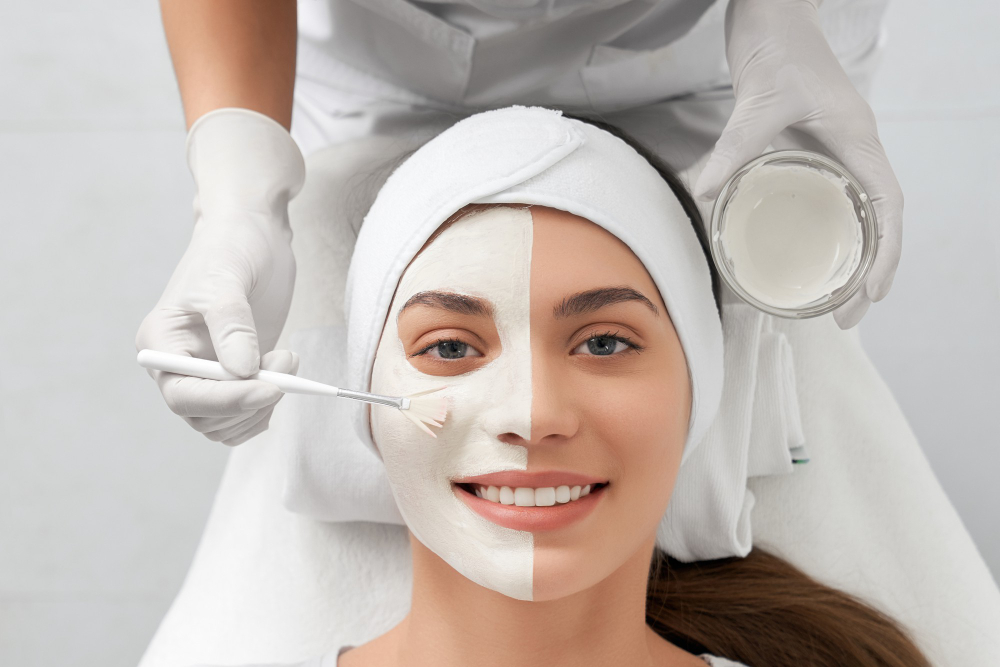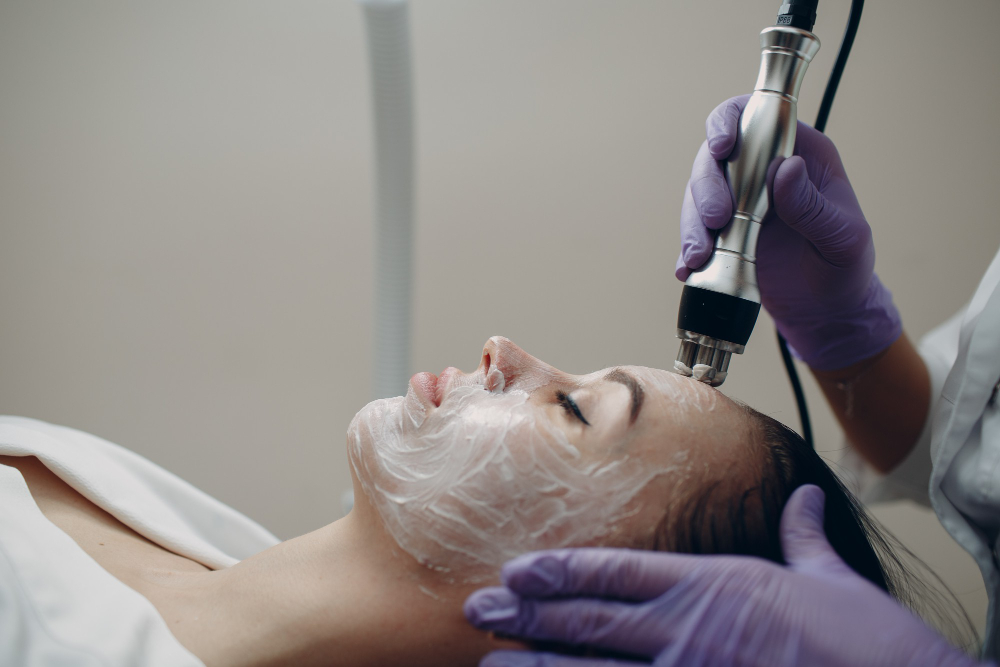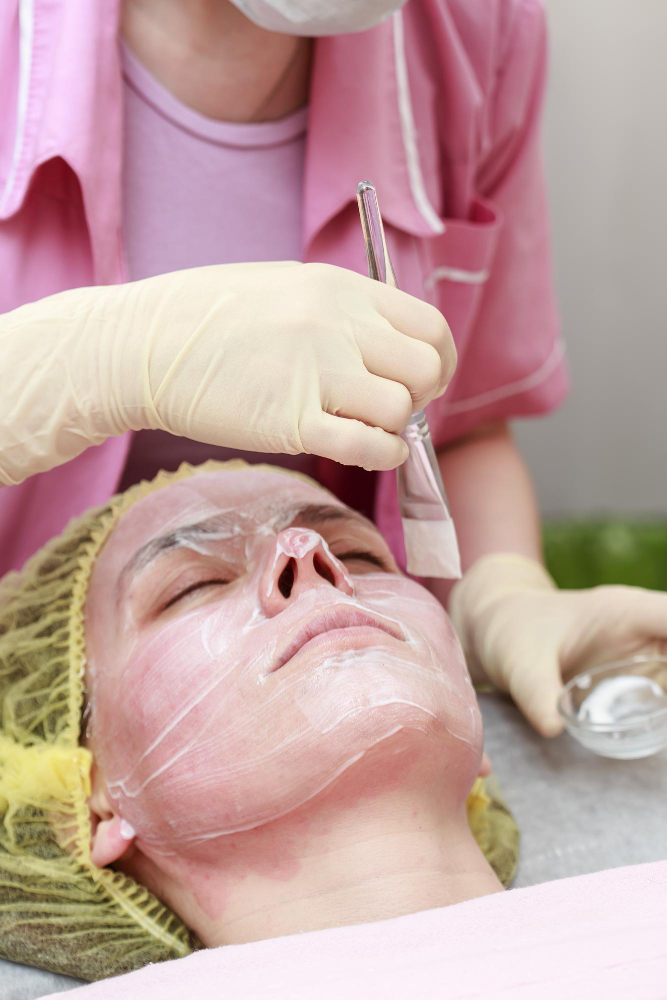Chemical Peels
Chemical peel, which is also called chemexfoliation or derma-peeling, is a method used to rejuvenate and refine the appearance of the facial skin. This technique involves applying a chemical solution to the face, which helps to eliminate the damaged outer layers and enhance the texture of the skin.

What are chemical peels?
Chemical peels are aesthetic procedures that can be administered on the face, hands, and neck in order to enhance the look and sensation of the skin. The treatment entails applying chemical solutions to the targeted area, prompting the exfoliation and subsequent shedding of the skin. As a result, the fresh layer of skin underneath is often smoother, with reduced wrinkles and damage.
There are several factors that can motivate individuals to undergo chemical peels. They may seek this procedure for various purposes, such as:
- wrinkles and fine lines
- sun damage
- acne scars
- hyperpigmentation
- scars
- melasma
- uneven skin tone or redness
What type of chemical peels can I get?
There are three distinct kinds of chemical peels available for you to receive. These options consist of:
Superficial peels
- Skin cells are extracted from the outermost layer of the skin called the epidermis.
- The remedy is administered topically and remains on the skin for a brief duration.
- Afterwards, you may experience a sensation of tightness in your skin that can last for a few hours.
- Consistent therapy is necessary in order to sustain the desired outcomes.
Medium peels
- The top and middle layers of skin are stripped of skin cells.
- the solution is administered and allowed to sit for a few minutes
- When the substance is applied to your face, you might experience a sensation of burning or stinging.
- Afterward, your skin may appear brown or red for a few days.
- Your skin may take as long as 6 weeks to go back to its usual state.
- The effects of the treatment should be maintained by getting another session every 6 to 12 months.
Deep peels
- affect the deeper layers of skin
- It may be necessary to administer a local anaesthetic and sedative to alleviate any discomfort.
- You can apply the solution to your face and leave it on for a duration of at least 30 minutes.
- It is important to monitor your heart and blood pressure as the chemical phenol can have an impact on these vital organs.
- For a few days, there will be some peeling, redness, and discomfort that you’ll experience.
- The swelling may persist for a duration of 2 weeks, while the redness may remain for a period of 3 months.
- frequently brightens the complexion, making it less appropriate for individuals with a darker skin tone.
- its effects are long-lasting and therefore typically do not require repetition.

SITUATIONS WHICH SHOULD BE EXAMINED BEFORE CHEMICAL PEELING
- The existence of a current infection and visible, unhealed injuries.
- An active infection caused by the herpes virus, resulting in a fever blister.
- A moderate or intense peeling procedure that was carried out within the past 3-12 months.
- Recent advancements have witnessed the implementation of cosmetic procedures on the face.
- History of abnormal scarring, a background in developing keloids, and a track record of slow wound healing.
- Radiotherapy history
- Fitzpatrick skin type IV, V, VI
- Suffering from an allergy to aspirin, specifically when it comes to undergoing salicylic acid peeling.
- Anticoagulant usage
- Intense smoking cigarette
- Pregnancy / breastfeeding
- The possibility of being subjected to strong sunlight
- Surgical procedures should be postponed for a minimum of six months.
Who qualifies as an ideal candidate for a chemical peel?
Typically, individuals with fair skin and light hair are more suitable for chemical peels. However, for those with darker skin, the results may vary depending on the issue being addressed. It is possible to achieve positive outcomes, but there is a higher chance of experiencing uneven skin tone post-treatment.
Chemical peels are not effective for addressing sagging skin, bulges, and deep wrinkles. In such cases, alternative cosmetic surgical options like laser resurfacing, facelift, brow lift, eyelid lift, or the use of soft tissue fillers such as collagen or fat may be necessary. It is best to consult with a dermatologic surgeon to determine the most suitable treatment option for your specific needs.
What is involved in recovery?
The time it takes for you to recover from a chemical peel will differ, similar to how your results may differ. The specific type of chemical peel treatment that was used will determine how long it will take for you to recover.
- The use of an AHA (superficial) peel may lead to temporary flaking or scaling, as well as redness and dryness of the skin. However, these effects will fade away once your skin becomes accustomed to the treatment.
- A phenol or TCA peel, which can range in intensity from intermediate to deep or medium, respectively, might result in a tingling or throbbing sensation. To alleviate this discomfort, you may be given a mild pain reliever. If your face was covered with tape during the treatment, it will typically be taken off within a day or two. It is normal for a crust or scab to develop on the treated area. To ensure proper healing of your face, it is crucial to adhere to the specific post-operative instructions provided by your doctor.
- Depending on the intensity of the TCA peel, there is a possibility of experiencing notable swelling. This treatment can cause substantial swelling in your face, and in some cases, your eyes may even temporarily close due to the swelling. It is necessary to have assistance and support for a day or two after the procedure. Additionally, you might be required to stick to a liquid diet and minimize talking during the initial days of your recovery.

SESSION DURATION AND NUMBER OF SESSIONS
The duration of sessions can vary from 30 to 60 minutes on average, depending on the size of the area being treated. The number of sessions required also varies depending on factors such as individual needs, the specific situation, and the type of treatment being applied.
- Superficial peeling applications should be done in 4-8 sessions, with intervals of 2-4 weeks between each session.
- Peeling in moderate depths should be done in 2-4 sessions with a gap of 2-4 months between each session.
One session of deep peeling treatment will be enough.
Treatment in Türkiye:
The medical staff of surgical teams, doctors and consultants in Rehab Türk can provide the best treatment options and free consultations – by striving to keep abreast of the latest medical technologies and methods.
